This guide to camping the Tour du Mont Blanc will walk you through your overnight options for all the stages of this 100-mile European hike!
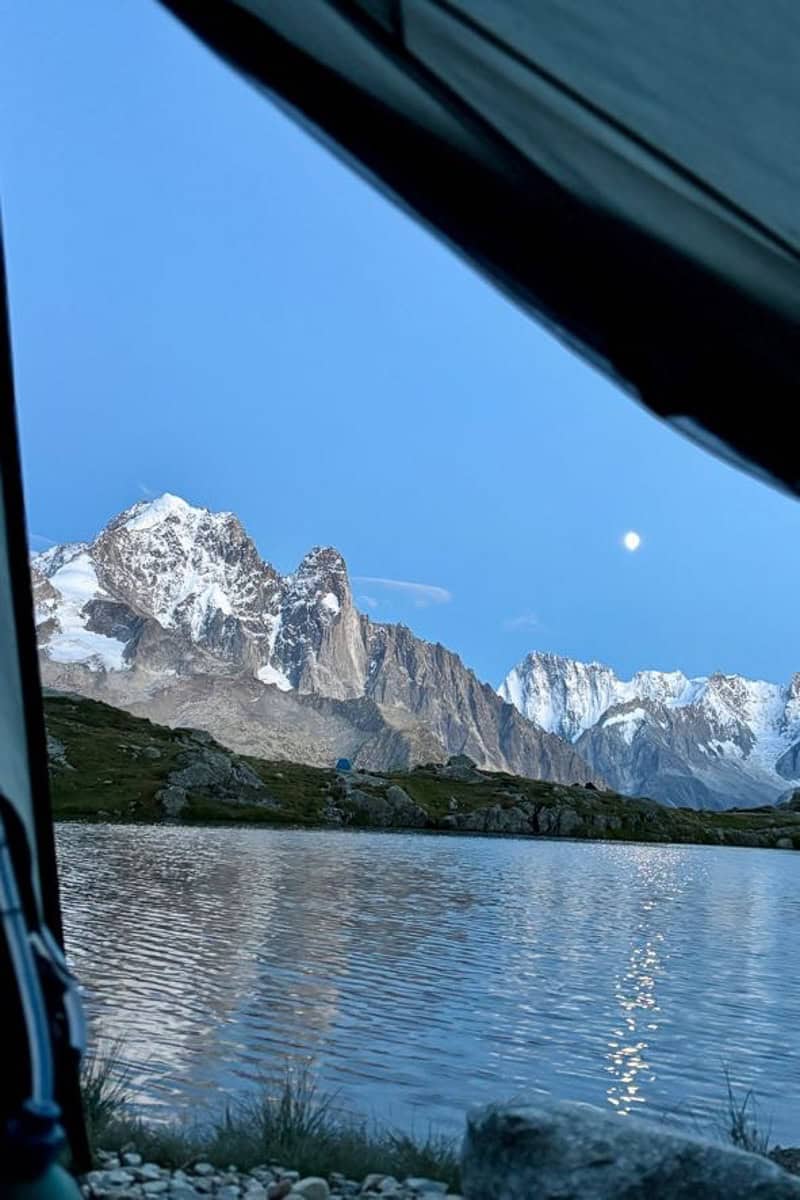
The Tour du Mont Blanc is a multi-day hike, and there are a variety of lodging options. The majority of hikers stay in refuges (mountain huts) with dorm-style beds.
Those with large budgets may attempt to find hotels or private rooms in refuges instead of staying in a dorm, but those options will be more limited and cost significantly more.
The other option, of course, is camping!
Want to camp your way through the Tour du Mont Blanc? We camped on our recent hike of the TMB and found it to be a really enjoyable experience. Here’s what you should know.
Camping the Tour du Mont Blanc: Pros and Cons
There are both pros and cons to camping (instead of staying in refuges) along the Tour du Mont Blanc. For us, the benefits outweighed any possible drawbacks, but let's discuss.
First, the cons.
While it’s definitely possible to camp, it is (without a doubt) a bit complicated!
This is especially true when compared to other long trails we’ve done, such as the Laugavegur Trail in Iceland, where camping was simple: you just show up and pay.
For the TMB, there are different camping styles (campground or bivouac), laws for each country or nature preserve you’re passing through, and even the option to book an occasional hotel.
Also, there are fewer camping options than refuges, and that will limit how many overnight stays you can have and where they'll be. If you’re camping, the distance between campsites will likely determine in part how far you’ll need to hike each day.
Now, the pros.
All that said, camping has a lot going for it! Here are some of the pros.
Not that complicated (for the TMB)
First, we should acknowledge that arranging any type of accommodation (including refuges!) for the TMB is somewhat complicated. (Unless you pay a company to make all your rooming arrangements for you.)
Camping the Tour du Mont Blanc is not that much more complicated than staying in refuges. It just takes a little planning, as well as some flexibility.
Less need to plan ahead
So, yes, you do need to plan ahead a little. If you're camping, you should have a basic understanding of the rules and where campgrounds are located. But you can be more spontaneous about it (if you want to be).
TMB hikers who stay in refuges often begin planning their hike about a year in advance. The popular refuges sell out quickly!
For campers, though, this can be more of a spur of the moment trip. Admittedly, we planned our camping trip well in advance, but we met multiple hikers doing this trail on a recent whim.
Camping is much cheaper
Another (massive) pro is the cost savings! Camping is, without a doubt, the most affordable way to do this trail. Many campsites are free, and those that aren’t are typically fairly inexpensive.
Compare that with the cost of a refuge (which varies widely, but starts at around 50€ a night minimum per person for a single dorm-style bed), and the savings are huge. This is even more true if you compare the cost of hotels along your route.
Put some of the money saved towards food and drink along the trail: there are some fantastic spots!
Privacy
Even if you book a private room at a refuge, many of them still have communal, buffet-style meals.
If you’re not a fan of dorm-style sleeping arrangements and communal meals, then the tent life may be for you.
We experienced a lot on the Tour du Mont Blanc! Here are our lessons learned and gear recommendations.
Bivouac vs Campgrounds
If you’ve primarily tent-camped in the United States, you may not be familiar with the term “bivouac.”
Bivouac camping refers to a form of regulated camping where the tent is set up at dusk and taken down at dawn. It’s part of an effort to “Leave No Trace” and avoid marring the view for visitors who’d prefer to see it without tents.
Generally, bivouac camping is single-night only. You aren’t allowed to leave your tent up for multiple nights.
On the TMB, there are lots of bivouac area options. Each area has its own rules, and some require registering for a free permit online.
Bivouac areas may or may not have restroom facilities and access to food or showers.
There are also campgrounds along or near the TMB. These generally function like a standard campground, and you can often set up your tent upon arrival and stay for multiple days if desired.
Camping Regulations on the Tour du Mont Blanc
The trail passes through three different countries, and each country has different rules.
- France: Allows wild camping within certain Nature Preserve areas in the Mont Blanc area. A free permit is required. There are also several campgrounds available along the trail in France.
- Italy: No wild camping is legal in the Aosta Valley below 2,500 meters, not even bivouac for less than 24 hours. (And basically the entire trail through Italy is below 2,500 meters). Most of the campgrounds you can access through this section are off-trail, and require taking public transportation to reach.
- Switzerland: Wild camping and bivouac are prohibited, with some exceptions. However camping is not difficult on the TMB in Switzerland as multiple campgrounds are available right along the trail.
Most of the wild camping locations available are bivouac-style camping, meaning you’re not supposed to pitch your tent until sunset and are supposed to be packing up around sunrise. (The exact times vary by location.)
When you’re staying at an official campground, things are generally a bit simpler and you can pitch your tent upon arrival.
Hybrid Camping, Refuge and Hotel Strategies
A camping-only approach is totally possible; however, another strategy is to camp most nights, and then stay in refuges or hotels occasionally. Reasons you might choose this strategy include:
- It makes the Italy portion of the trail more manageable, especially if you’re a slower hiker (like me!) and would need to spend multiple nights in Italy
- This is a really long trail! A real bed partway through can be a treat
- Staying in a refuge or hotel can give you an opportunity to recharge your electronic devices
Options for Each Stage of Camping the Tour du Mont Blanc
The following is a list of camping or bivouac options in each stage of the TMB, including at the start and end (Chamonix and Les Houches).
In Chamonix and Les Houches
There are multiple campgrounds in the Chamonix and Les Houches areas. See a list of available options here.
Stage 1
The TMB begins in France, and you’ll find multiple camping options in the beginning stages.
- On the stage 1 variant
- Beautiful area (we stopped for lunch but didn’t camp)
Camping Le Pontet in Les Contamines
- Traditional campground
- Good reviews
Refuge Nant Borrant bivouac
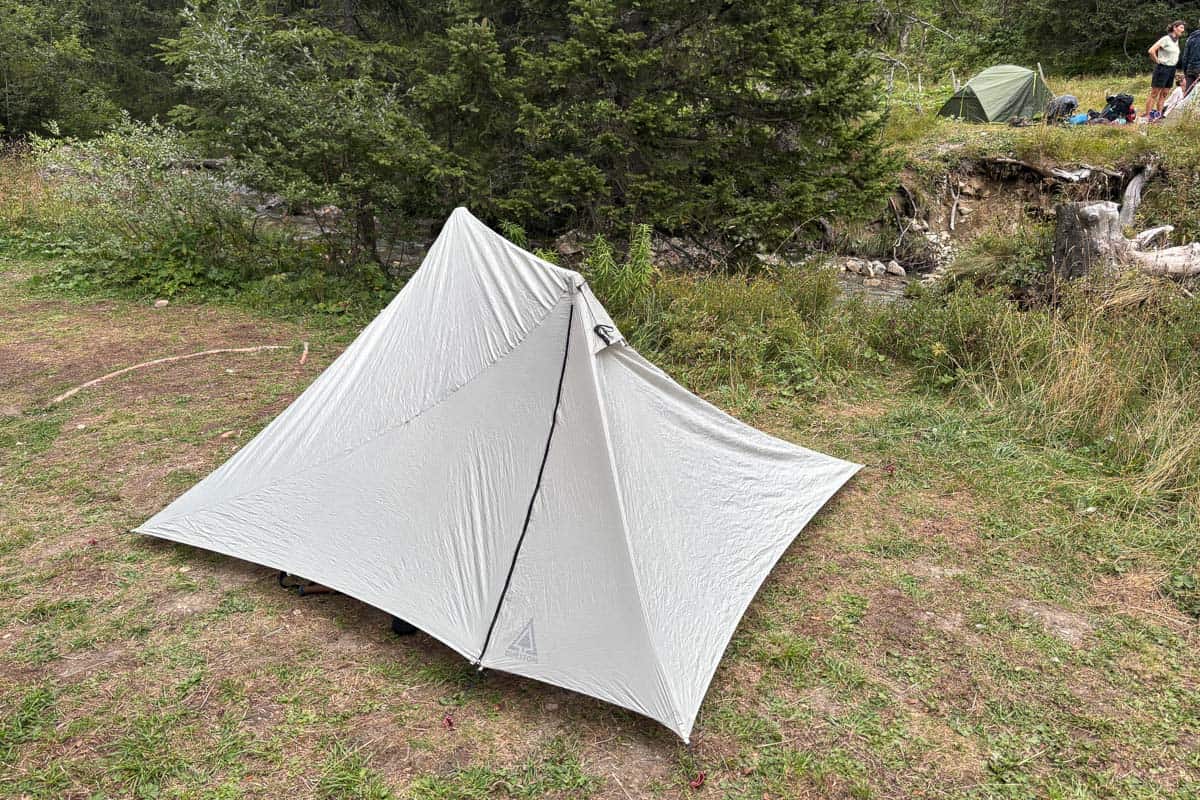
- Free permit needed. Apply here and choose the Contamines-Montjoie National Nature Reserve option
- It was lacking in amenities, but since it was free I can’t complain
- We camped in a field next to a creek. I think there were maybe 10 other tents there that night
- There was a vault toilet available. (It did have a “women’s urinal” that I was too short to use, so that’s a first for me!)
- The cows in the pasture next to the field continued walking around (jingling their cowbells) all night, so I’d recommend earplugs if you’re a light sleeper
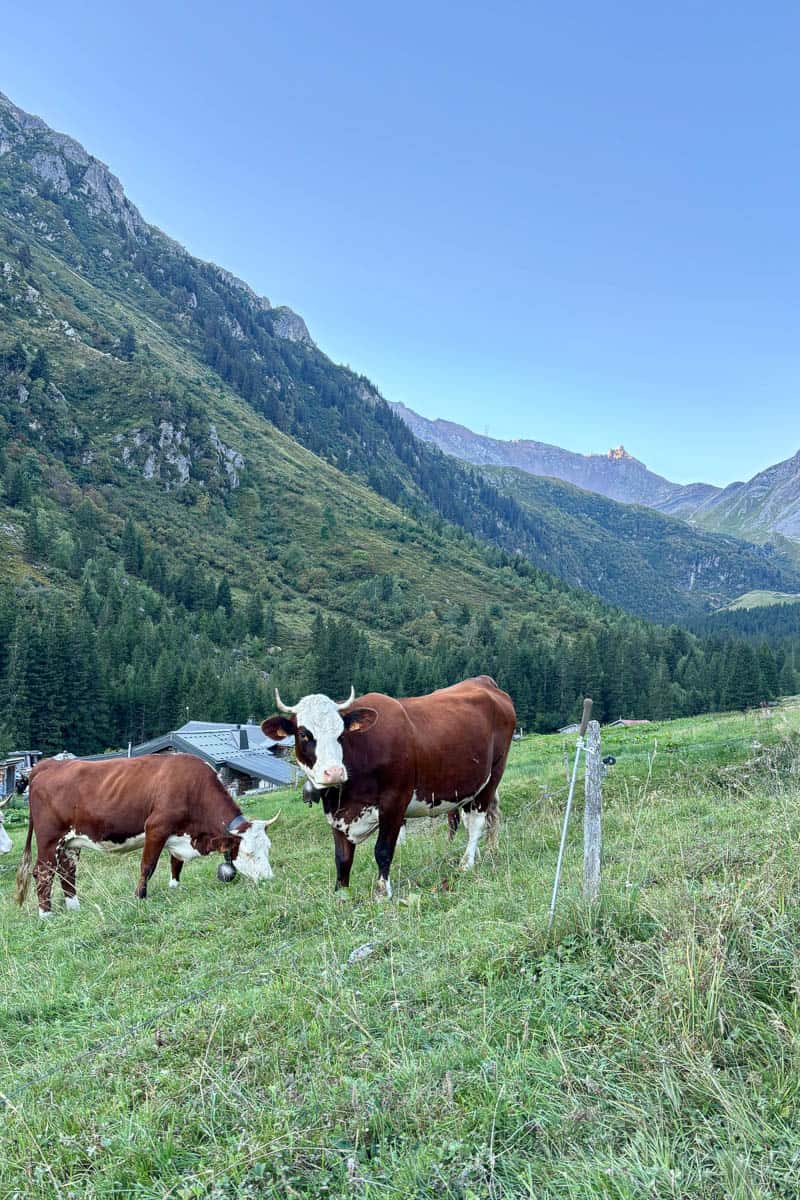
Refuge Le Balme bivouac
- Free permit needed. Apply here and choose the Contamines-Montjoie National Nature Reserve option
- We didn't stay here, but I heard good things about this spot
Stage 2
Camping continues to be straightforward through stage 2.
Refuge de la Croix du Bonhomme bivouac area
- Saw from multiple sources that this refuge allows bivouac, but I don’t see it on their website. Recommend contacting them for details
- This is a very exposed area. If it’s windy or expected to storm, I’d consider moving on to Les Chapieux
Aire Naturalle de Camping in Les Chapieux
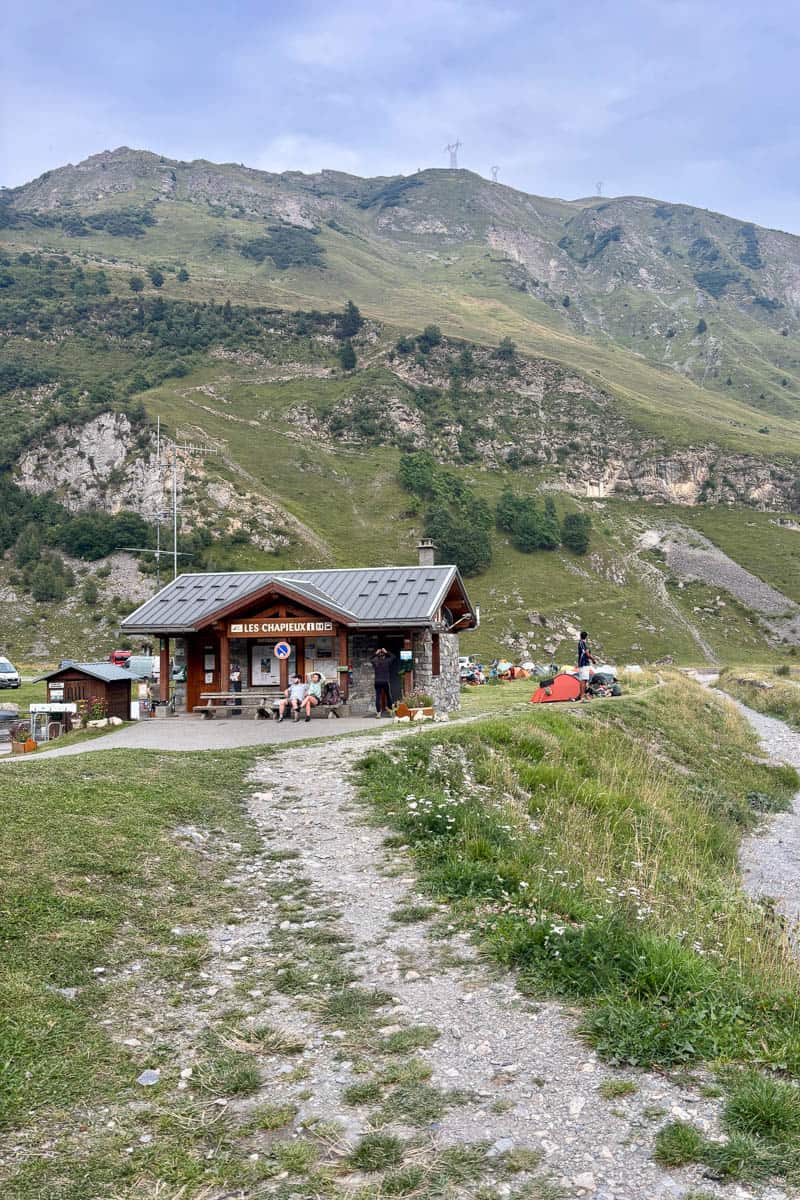
- Suggested 5€ donation (cash). You pay at the box near the restrooms
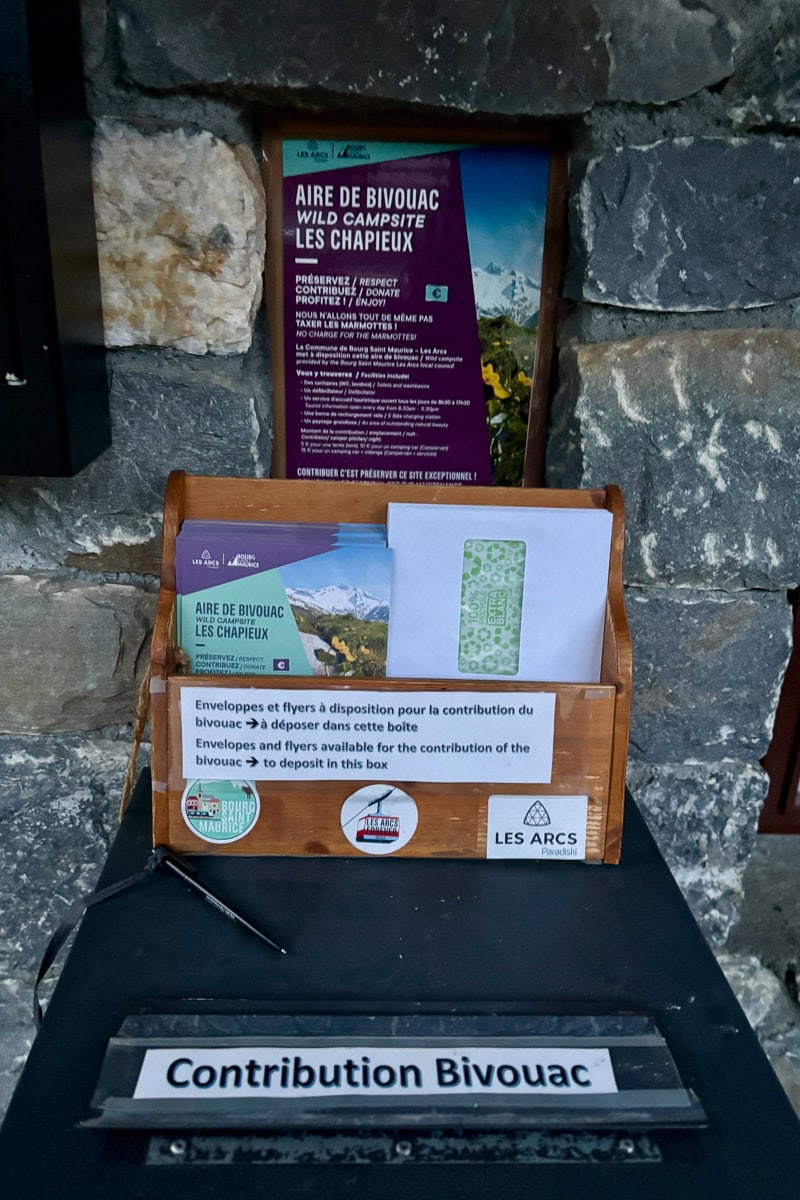
- We pitched our tent upon arrival (no need to wait until 7 p.m.)
- Had a restroom with potable water available
- The restroom started off with hand soap but ran out quickly and wasn’t refilled. Bring your own soap
- No showers. Later I heard showers may be available at the refuge next door for a fee.
- No phone signal. Later I heard that there was WiFi at the pizza place if you made a purchase, but we didn’t know that while we were there so I couldn’t check
- Amazing pizza cafe
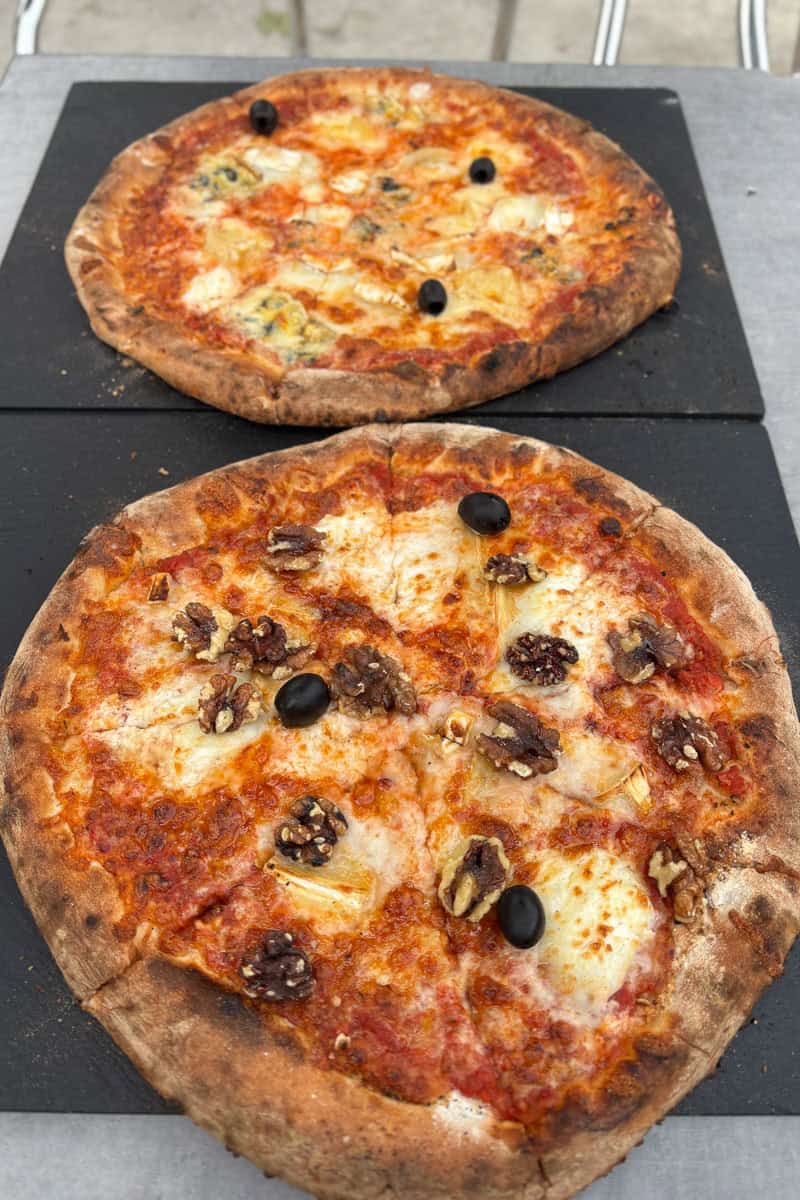
- The camp store was really small, but I was impressed. It had everything we wanted (chips, gummies, drinks). They also sold premade sandwiches that turned out to be the best sandwiches we had on trail
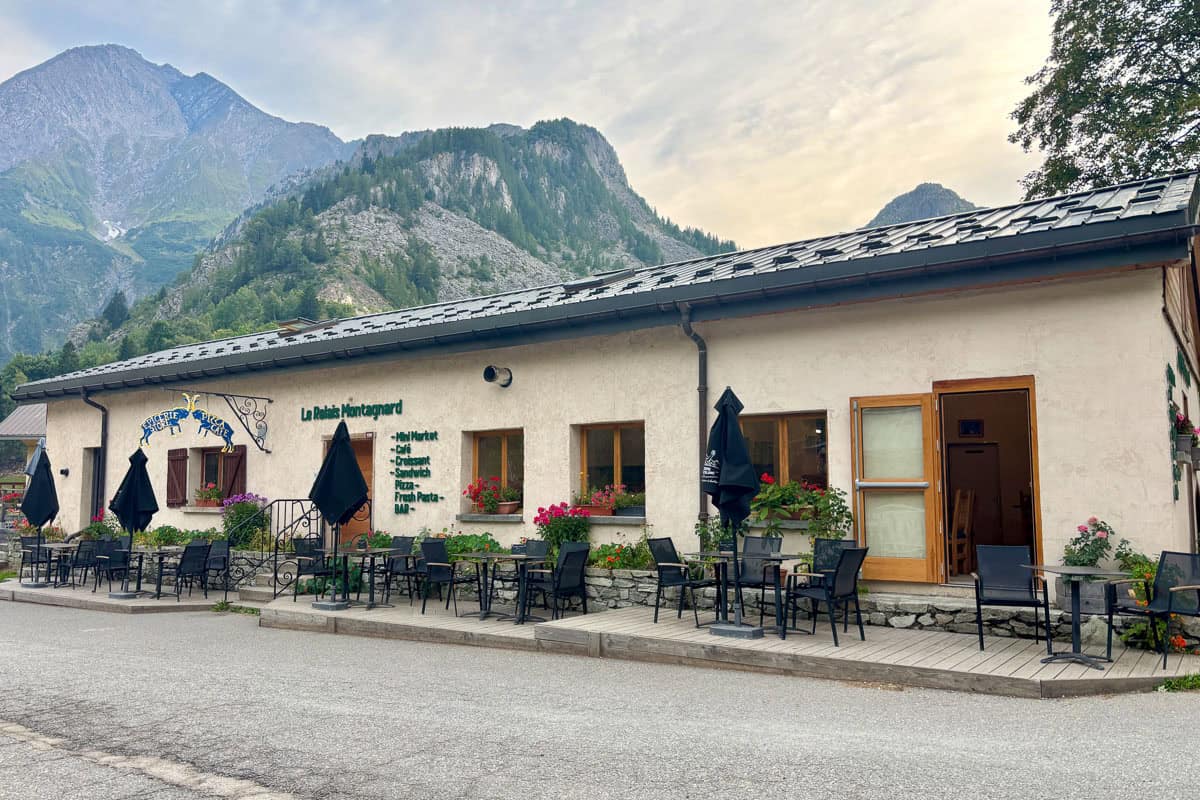
- Once again, the bells on the farm animals nearby kept me awake. I’d highly recommend earplugs for light sleepers
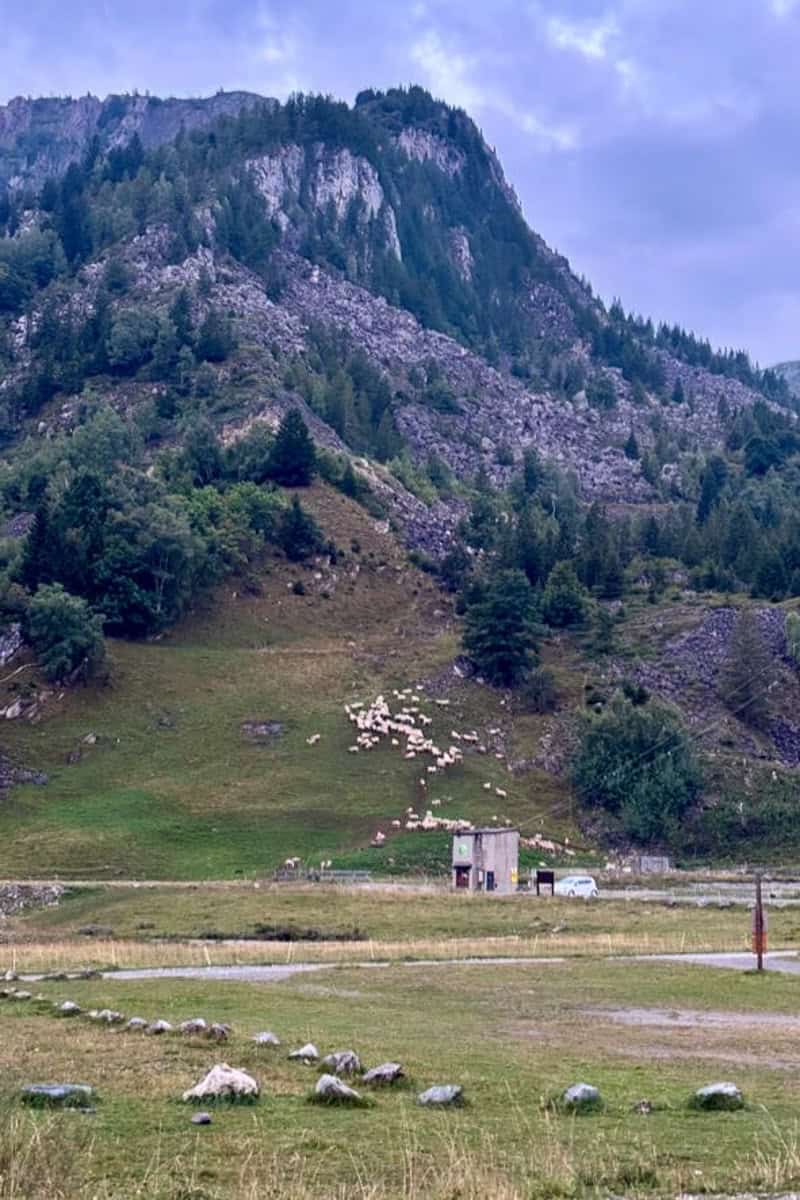
Stages 3 - 5
Now that you’re in Italy, the options will get tougher. There are no official (or legal) campsites in these sections unless you go off-trail. The camping options in this section will require taking a bus to either the nearby town of Val Veni or Val Ferret.
We opted to get a hotel in Courmayeur (end of section 4) and stay at Chalet Val Ferret (end of section 5) to simplify our route.
Since you’re taking public transportation to reach these locations, you might consider staying at the same site for multiple nights and using public transportation to reach the trailheads. This would allow you to hike without a heavy pack.
Campgrounds in Val Veny:
Campgrounds in Val Ferret:
Stage 6
Stage 6 ends in Switzerland, and life is easier again for campers!
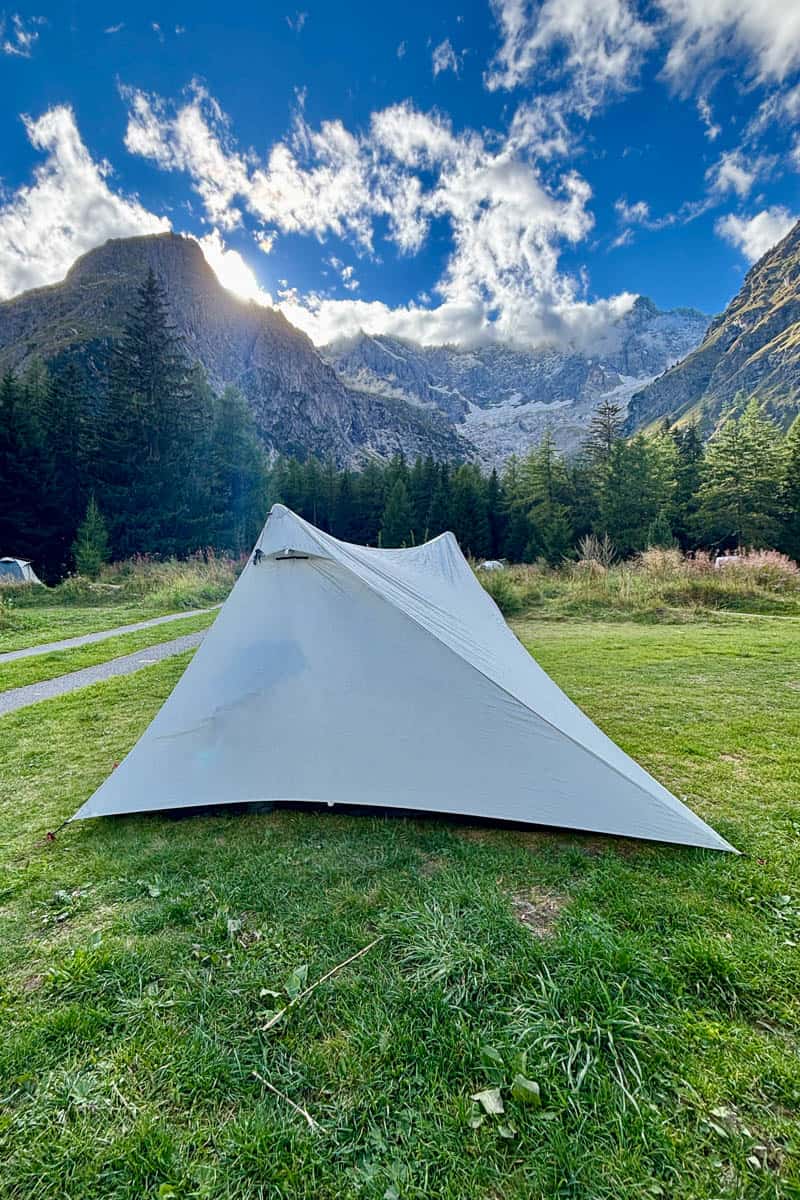
- When we stayed here in 2025, the price was 20 francs for one tent with one adult, and an additional fee for a second adult. The total was around 32 francs after taxes.
- We reserved a spot online, and checked in when we arrived
- We were assigned a shared campsite (with plenty of room)
- This campground had laundry (yay!), free showers (yay yay!), restrooms with soap (a rarity on this trail) and a recreation space
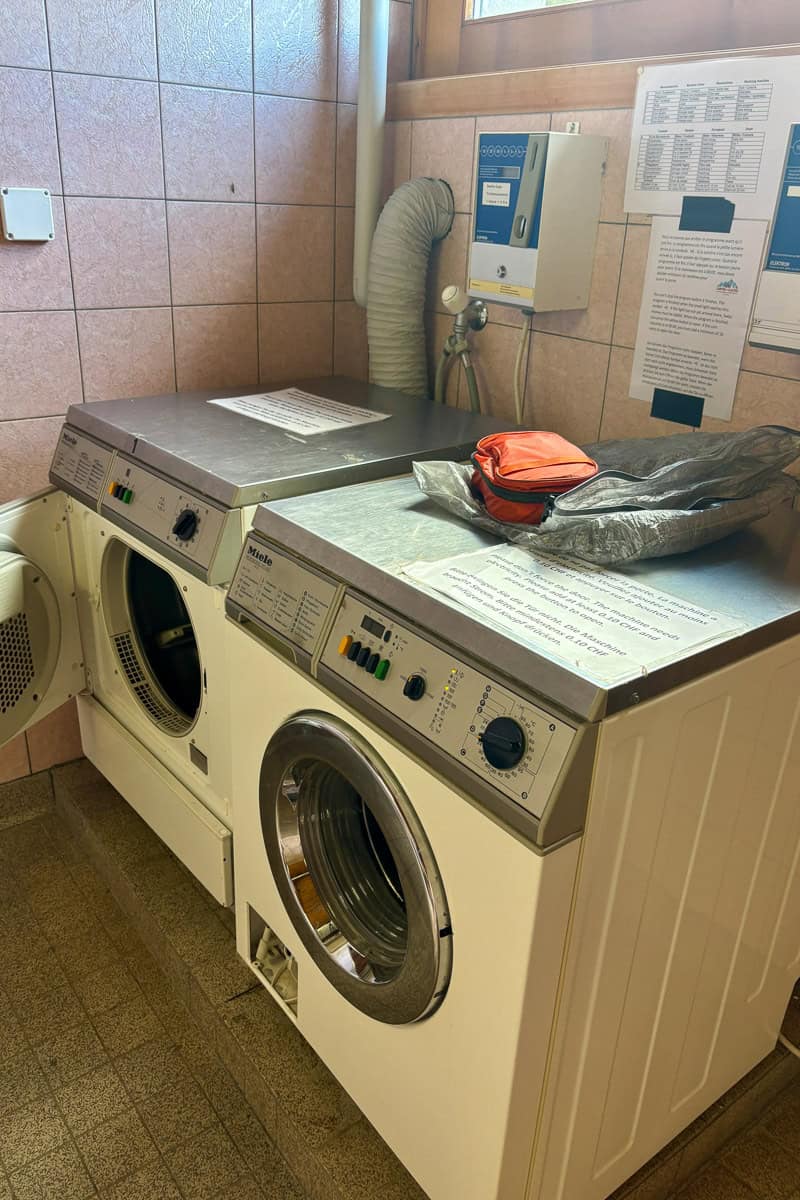
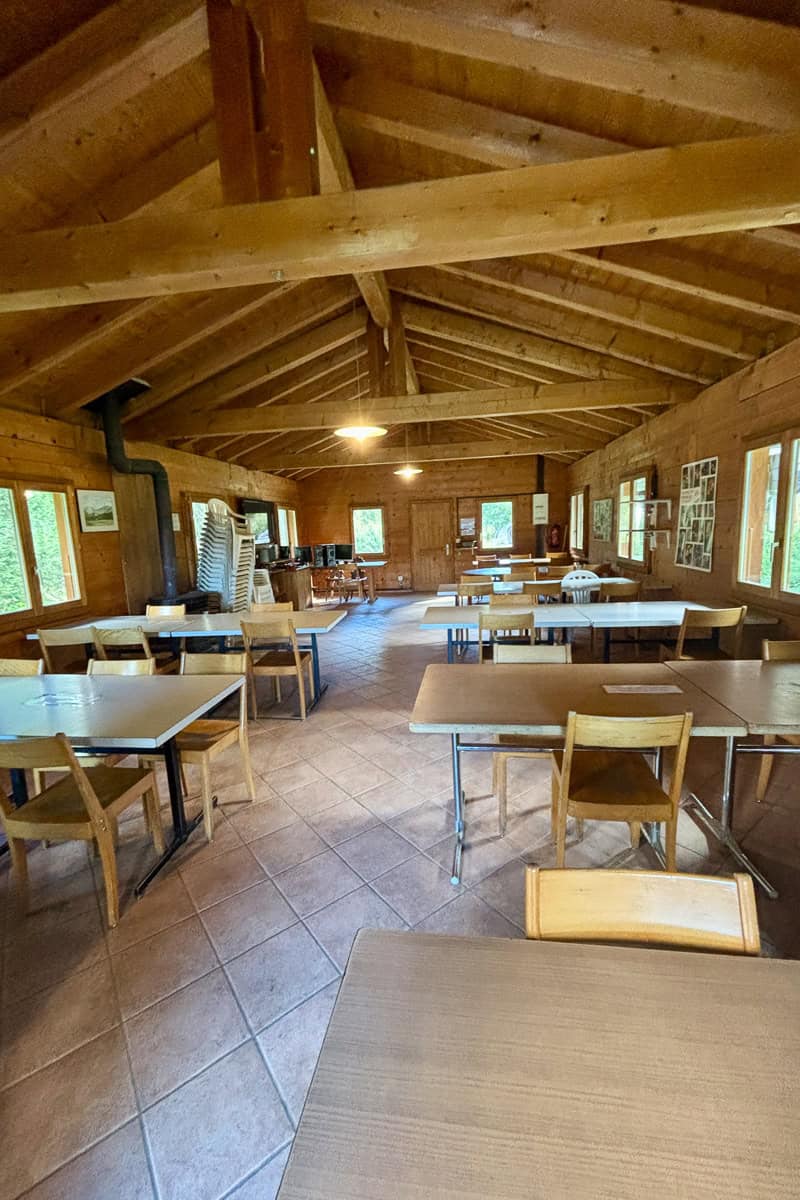
- When we checked in, they asked if we wanted to pre-order pizza for dinner. (Yes, obviously.) The pizza was fantastic, and I (quite glamorously) devoured it in the laundry room while I waited on clothes to dry
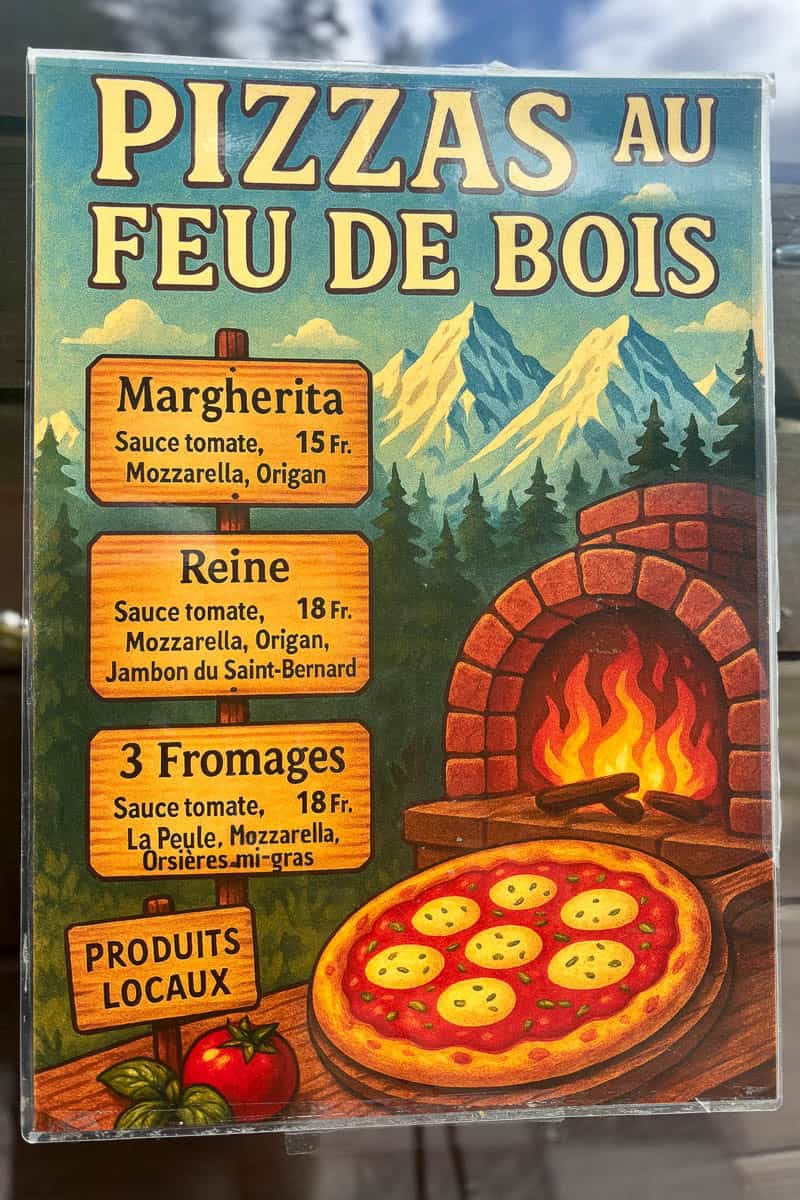
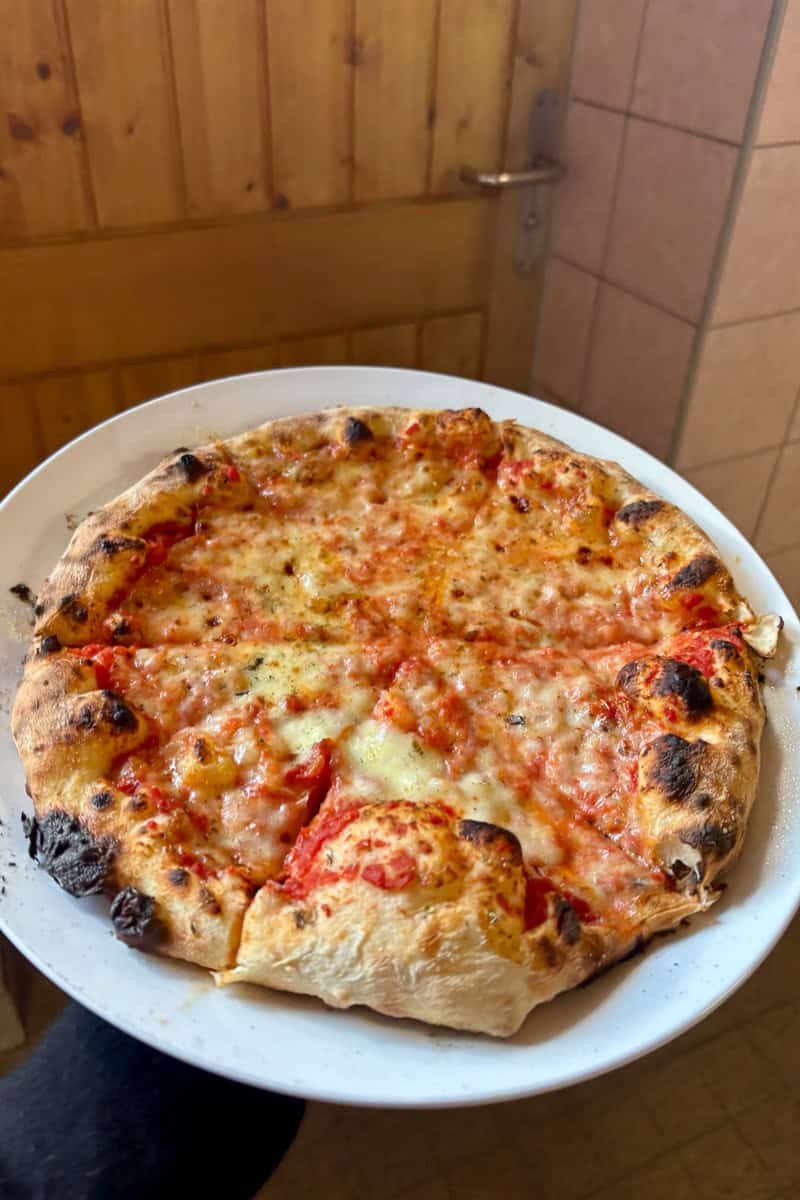
Stage 7
Champex Lac is one of the larger villages on the TMB, so in addition to camping options, if you feel the need for a real bed at this point there are hotels.
- Located in Champex Lac
- Standard campground
Stage 8
Relais d’Arpette campground
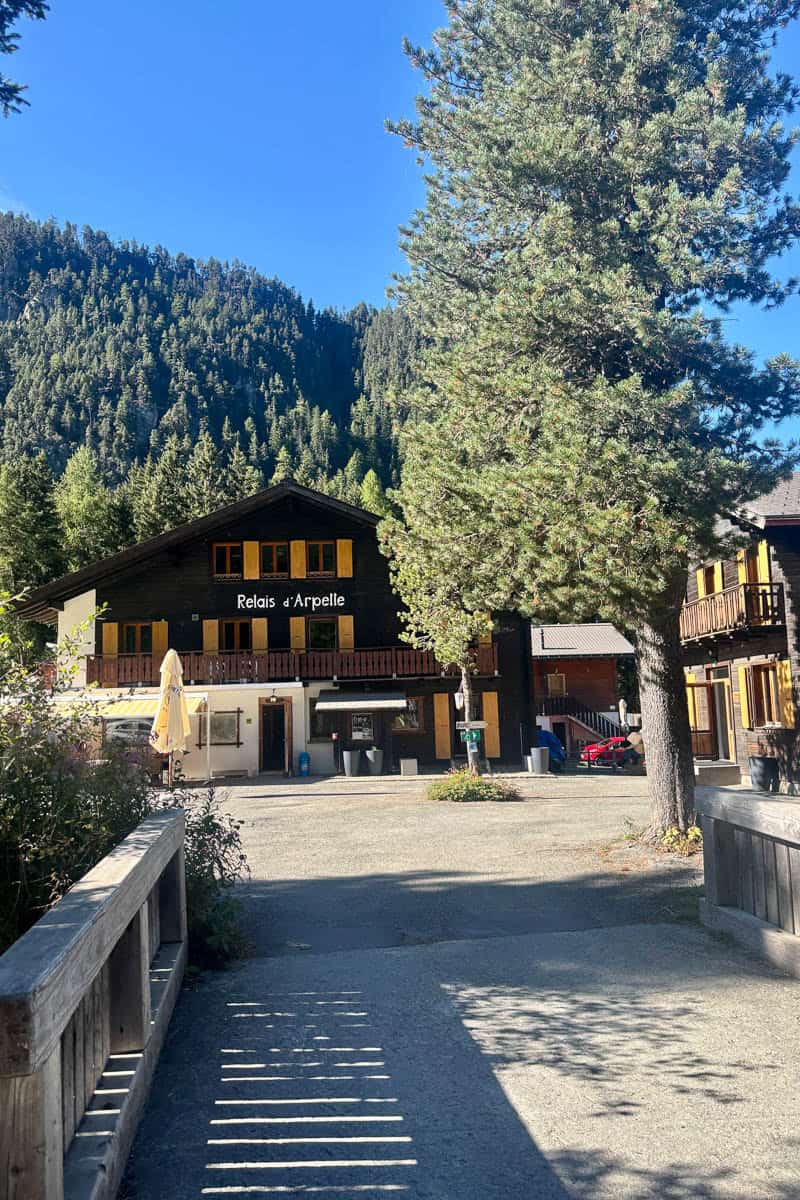
- Located just past Stage 7, on the Stage 8 variant trail. This is still in the Champex Lac area.
- We actually booked a private room at this refuge, but they do allow camping here. And you can set your tent up before 7 p.m., unlike many of the other refuge-adjacent bivouac areas
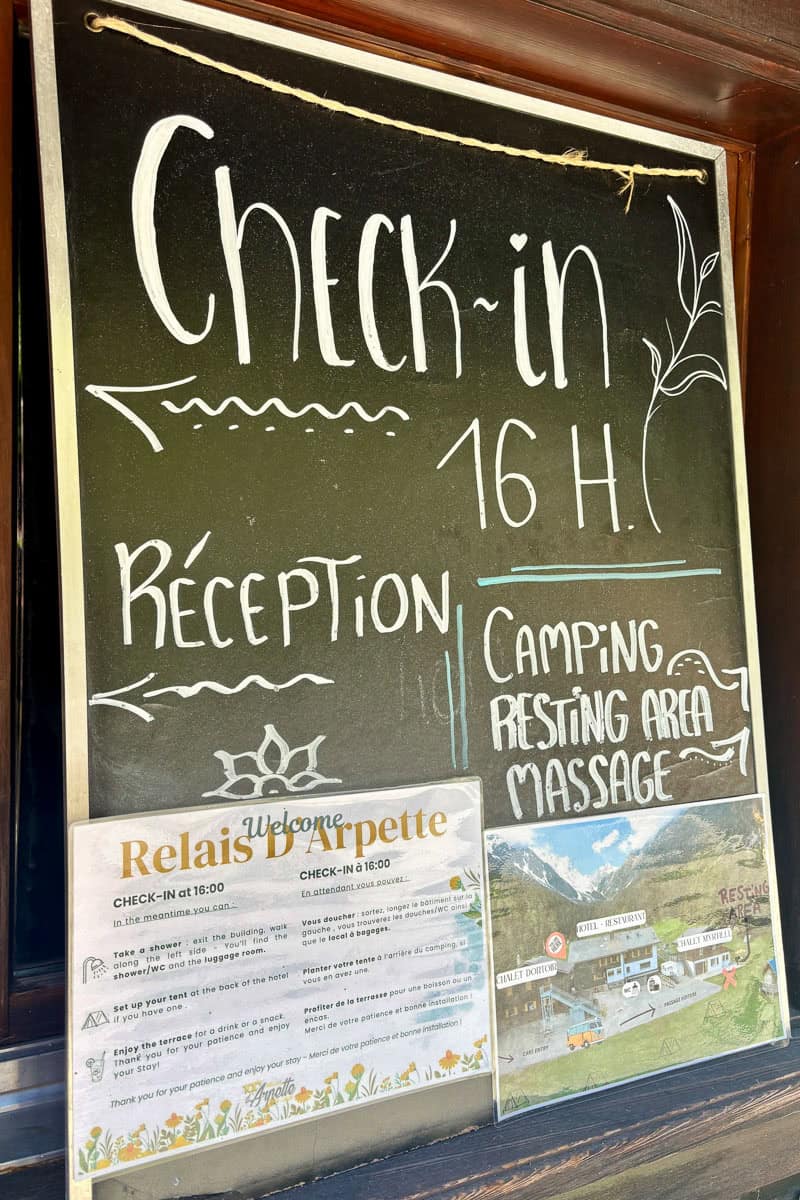
- Camping here gives you access to showers and restrooms
- 15 francs per adult (in 2025) and can be reserved ahead of time online
Hotel du Col de la Forclaz bivouac
- Bivouac area near the hotel
- We stopped here for fries and beer, and then continued on to the next campsite just to get farther down the trail
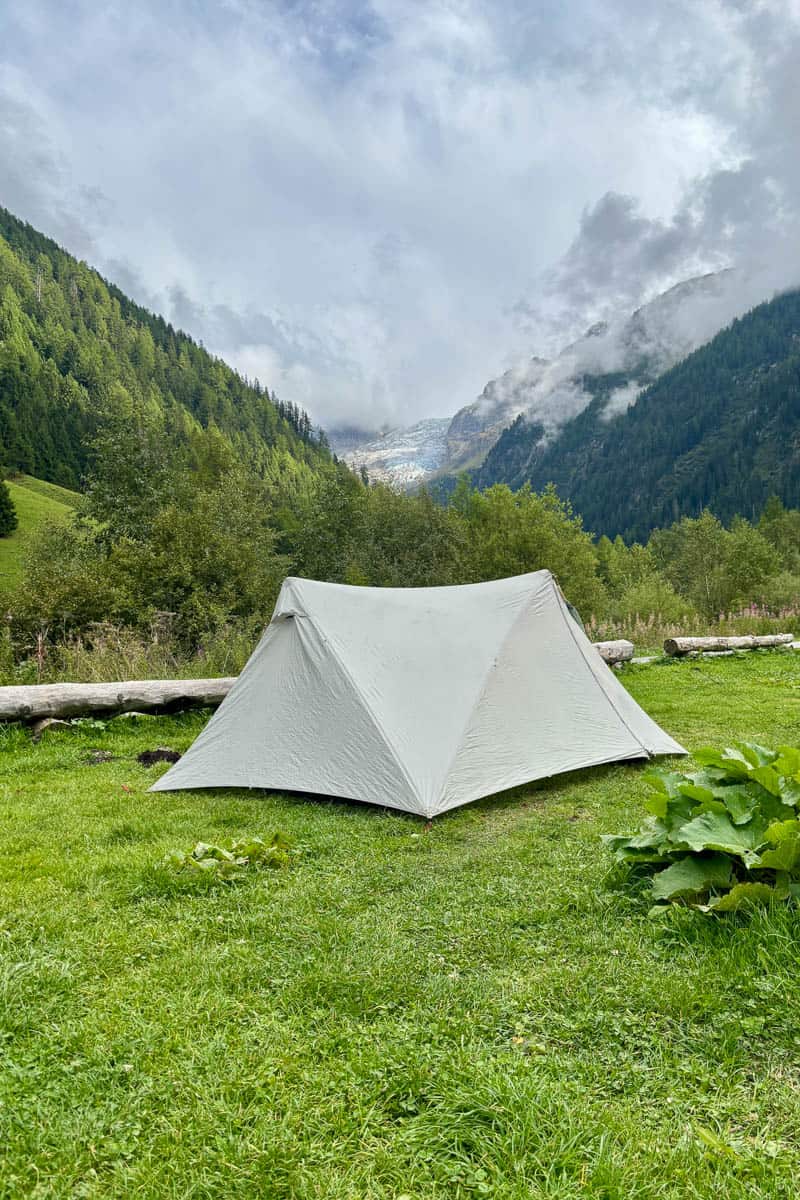
- 8 francs per person (in 2025)
- No reservations: just show up before 7 p.m.
- Right on trail
- We enjoyed this campground, in part because we got a really nice dinner here
- Go to the hut registration desk (not the area where you pay for the campground), and you can reserve dinner in the yurt, as well as breakfast and a packed lunch for the next day
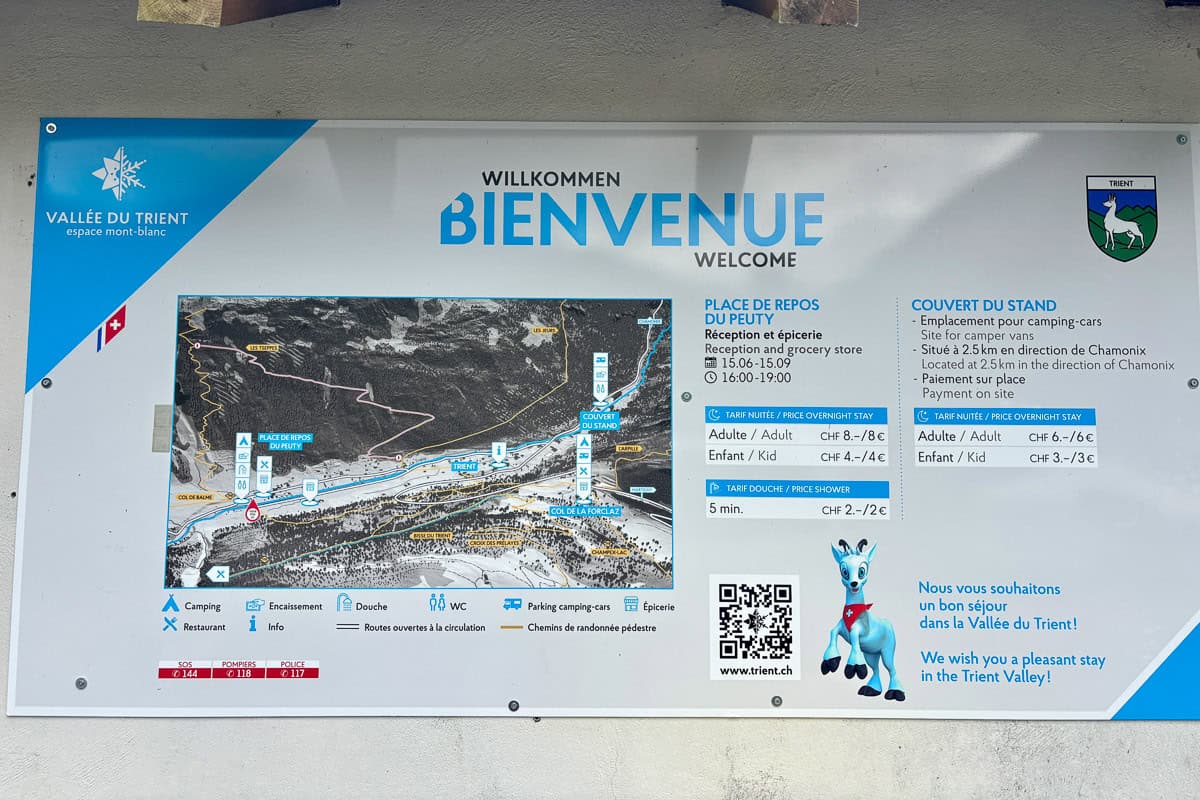
Stage 9
You’re back in France at this point, but camping options are a little more limited through this section.
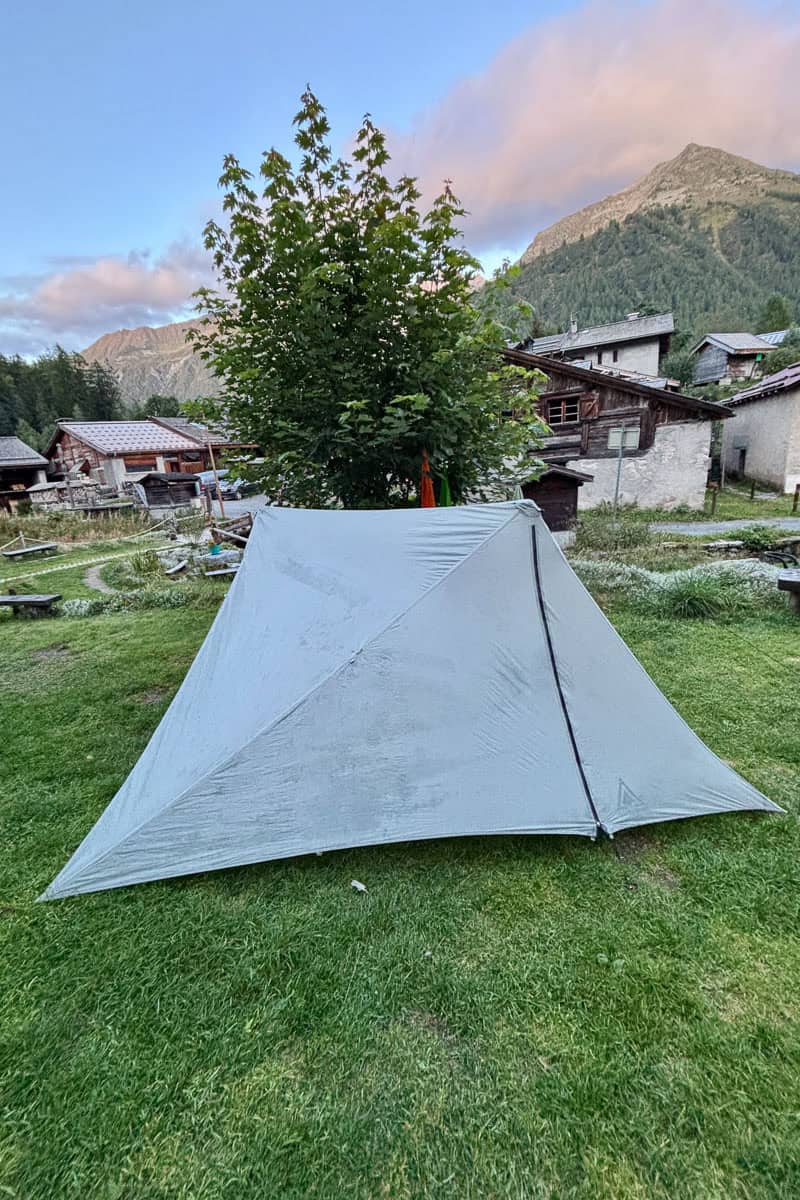
- We camped here and it was our priciest campsite of the whole trip: 40€ per person as of 2025
- Price includes dinner, breakfast, and access to showers
- Tents couldn’t be set up until 7 p.m., and had to be down before we came to breakfast
- The included dinner was extremely late (8 p.m., but we didn’t get food until about 8:20), and it was my least favorite meal on the trail. (Admittedly, by the time we got our food, I was tired and well, hangry. I probably should've eaten my own food earlier and gone to bed, despite paying for dinner.)
- This is a VERY small camping area, and only seems to hold about three tents. If it’s full you may have to go off-trail to another site (see below)
- Location-wise this spot was great, but it was my least favorite camping experience on the trail. If we went again I’d likely keep walking to the off-trail site. Or if I had the energy, carry on to section 10
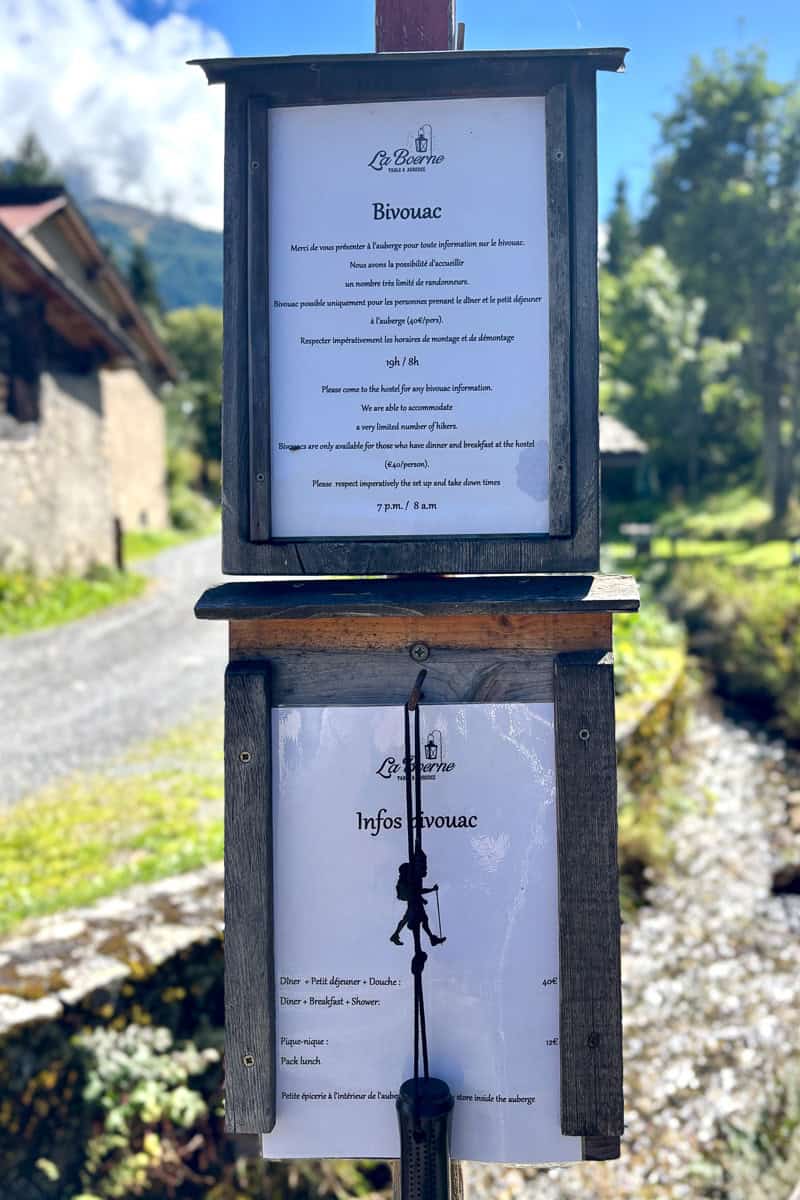
Off-trail camping option (walk or take bus):
Stage 10
This section is one of the most strikingly beautiful of the entire trail. If you’re able to camp here, savor the experience.
Lacs des Chéserys bivouac
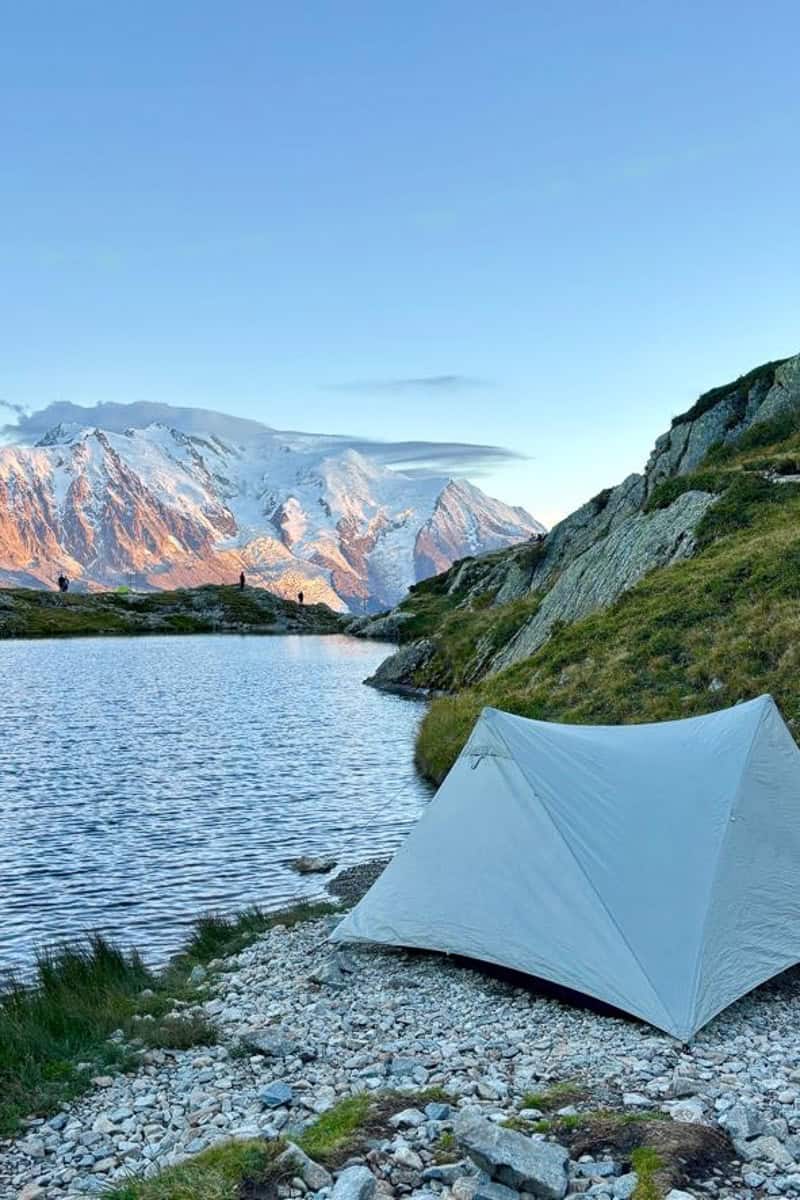
- Free permit needed. Get it here and choose the Aiguilles Rouges' National Nature Reserves option
- Bivouac camping. Tents weren’t supposed to be set up until 7 p.m. and should be packed by 9 a.m. (It feels like this matters more here than in other areas, since there are a lot of day hikers attempting to enjoy the views without tents in the way.)
- Zero bathroom facilities (that I saw). The ground is also extremely hard and rocky. A WAG bag isn’t required but in hindsight would probably be a good idea
- No potable water available
- Absolutely stunningly beautiful. There are many great camping locations, although some are more exposed to wind than others
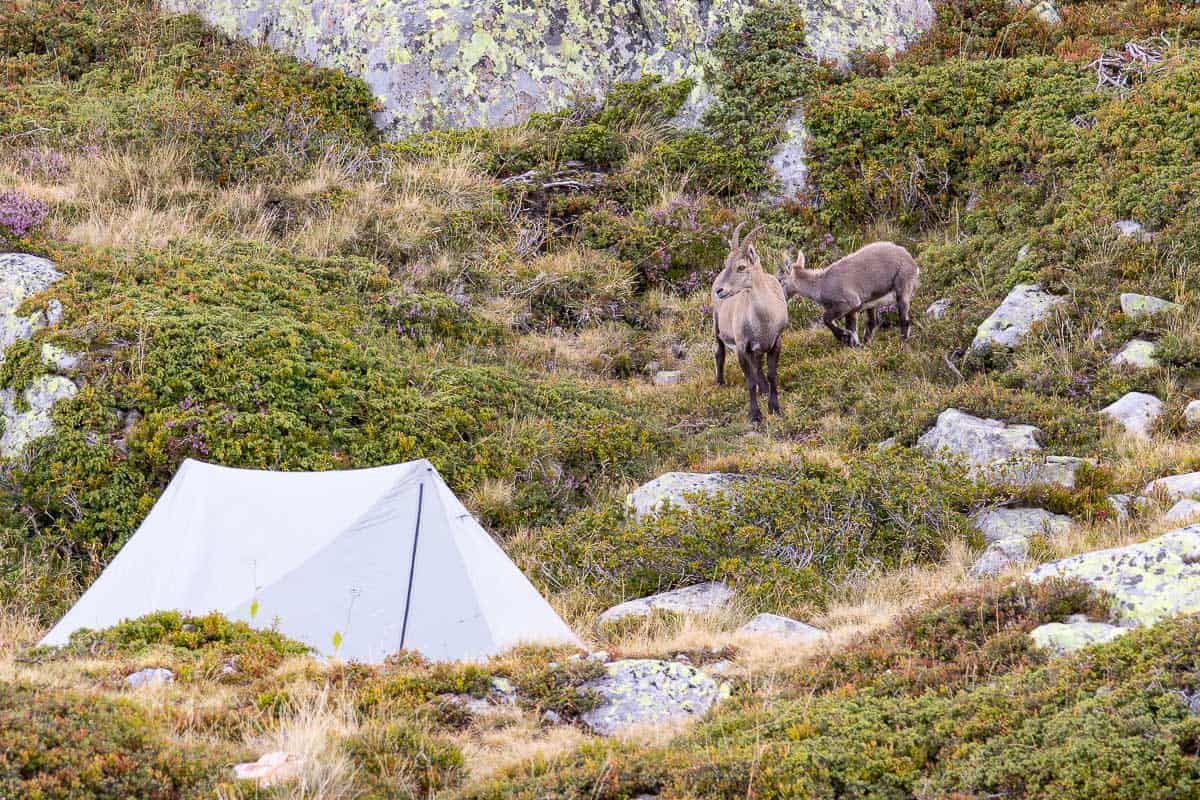
Refuge de La Flégère bivouac
- No potable water
- More amenities than the Lacs des Chéserys site, and still quite a lovely area
Stage 11
Once you’re done with this section, you can opt to stay at any of the campgrounds in the Chamonix or Les Houches area, or splurge for a hotel as an end of the trail treat!
Need to shorten the TMB for logistical or health reasons? Here's a guide to the many options!

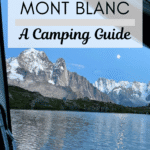
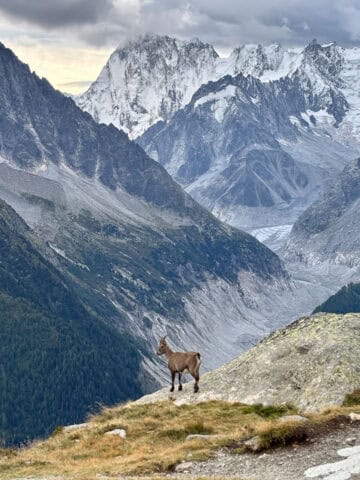
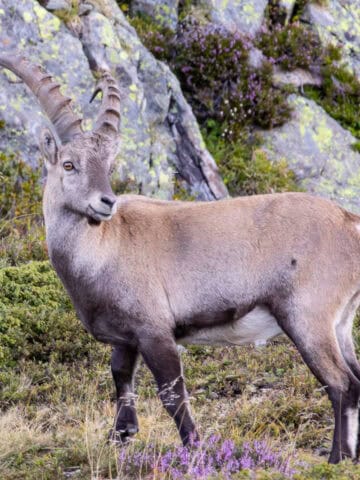
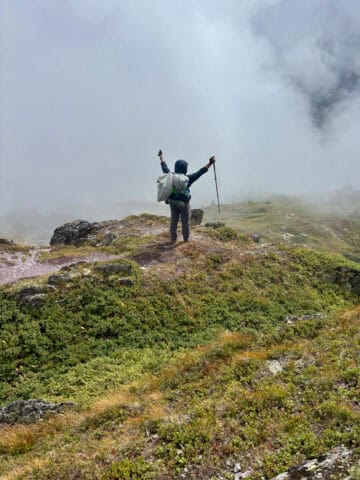
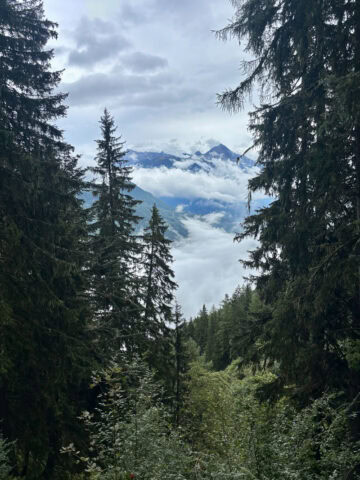
Leave a Comment: